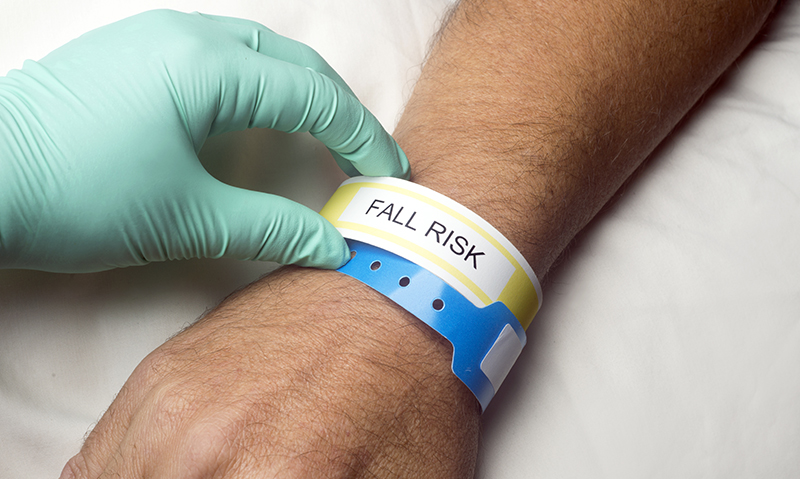PATIENTS who fall while in hospital have significantly longer stays and higher hospital costs, even if they are uninjured, according to new research.
A prospective cohort study of all admissions to 12 acute medical and surgical wards of six Australian hospitals in 2011‒2013, published in the MJA, found that 966 (3.6%) of 27 026 hospital admissions involved at least one fall and 313 (1.2%) at least one fall injury. (1)
Patients who had an in-hospital fall had a mean increased length of stay (LOS) of 8 days compared with non-fallers, and mean additional hospital costs of $6669, the study found. Patients injured in a fall had a mean LOS 4 days longer than those who fell without injury.
“[Falls] are a significant burden on hospital resources because of the resulting increases in LOS and costs, with patients who experience an in hospital fall having nearly twice the LOS and costs of non-fallers”, the authors wrote. “Our study shows that more than half of the additional costs associated with a fall injury can be attributed to the fall itself, not the injury.”
Dr Robert Herkes, clinical director of the Australian Commission on Safety and Quality in Health Care, said a hospital falls rate of 3.6%, with a third of those patients being injured, was clearly a significant patient safety problem.
Falls prevention is one of 10 National Safety and Quality Health Service Standards rolled out by the commission in 2012, which are currently being evaluated for effectiveness. (2)
South Australia had reported a significant reduction of 53% in in-hospital falls resulting in serious harm between 2010‒2011 and 2013‒2014. (3)
“We think [the national] standards are driving [improvements] in care, but clearly one person falling over is one too many, and there is still a way to go”, Dr Herkes told MJA InSight.
He said it was interesting to note the MJA study findings on the impact of the fall itself, rather than the injury, on the length of stay.
“That suggests that the cohort of patients that are having falls may be sicker, have a higher incidence of delirium, or may have a higher incidence of factors that are predisposing them to falls than the rest of the patient population”, he said.
The MJA authors acknowledged several limitations in their study, including unmeasured patient management factors such as the severity of a patient’s illness and acuity of care.
They also noted that best practice guidelines recommended that falls patients be provided with prevention strategies and be assessed for risk before discharge. “As a result, delivery of guideline-based care is likely to influence the overall hospital LOS, regardless of injury, and thus their use of hospital resources”, they wrote.
Dr Herkes welcomed the suggestion that the delivery of guideline-based care might be behind the longer hospital stays associated with falls.
“We all believe that adherence to clinical guidelines improves care, so if it really is guidelines that is driving these people staying in hospital for longer, that can’t be a bad thing.”
Professor Ian Cameron, professor of rehabilitation medicine at the University of Sydney, said falls prevention in older people was complicated and challenging, but it was not a “lost cause”.
“Certainly we’re trying to prevent falls, and I think we can probably do better over time. Hospitals are still potentially hazardous places, particularly for frail, older people”, Professor Cameron said.
He said efforts to prevent falls required focus on several areas. “They relate to the patient — not doing things that mean they lose strength and are more likely to fall; environmental factors, such as the design of wards and hospitals; and staff attitudes, both in encouraging appropriate activity for older people in hospitals and in recognising and mitigating risk.”
Professor Cameron said the psychological impact of a fall could be one mechanism behind the longer hospital stays for patients who fall without injury. “The fact that a fall without injury increases length of stay rings true to me”, he said.
(Photo: Sherry Yates Young / shutterstock)
An interview with Renata Morello, a coauthor of the MJA research, is available as an MJA podcast and at iTunes. The interview is also available as a video.

 more_vert
more_vert